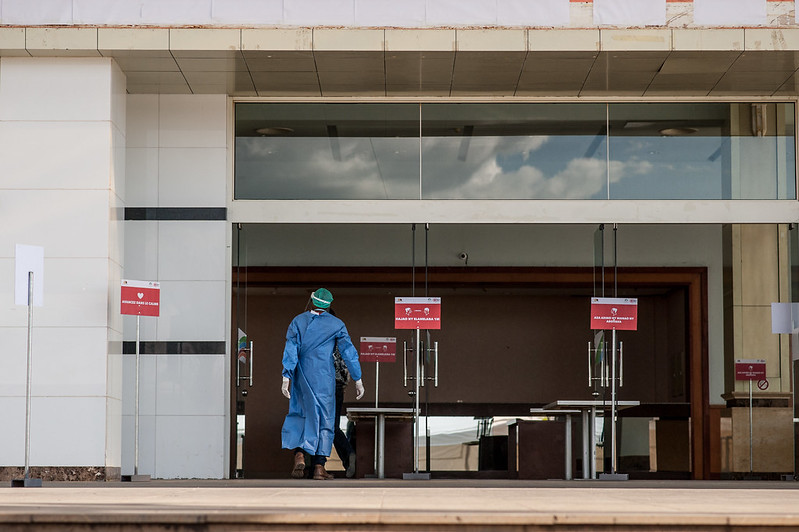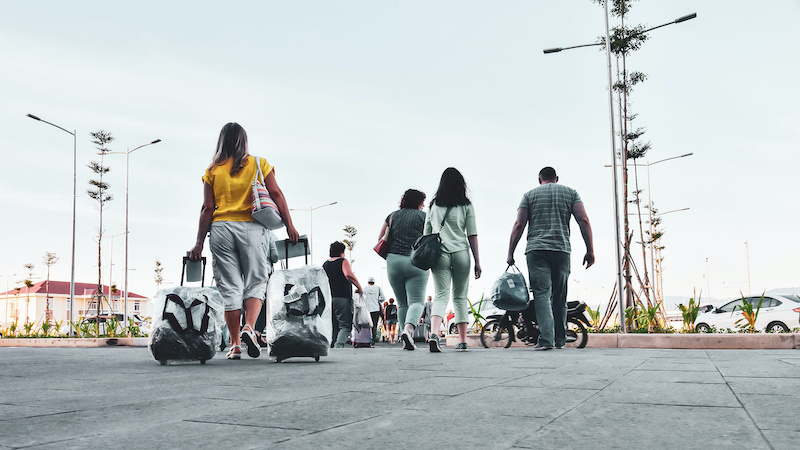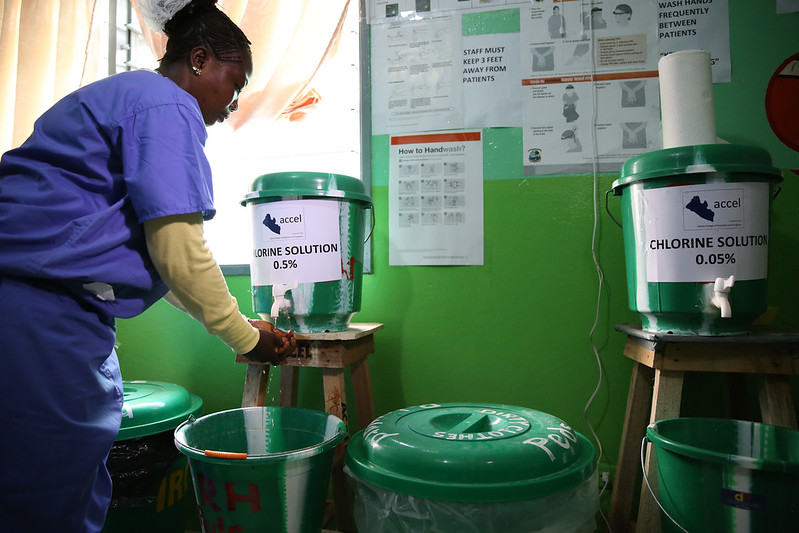I’m delighted to share the news that yesterday the U.S. government added Haiti to the list of more than 50 countries eligible to participate in the H-2 visa program for temporary and seasonal workers, ending a longstanding policy of excluding Haitians from America’s largest temporary employment-based visa program. This is wonderful news for Haitians and Americans. It has the potential to unlock hundreds of millions of dollars in new economic opportunity for Haitian workers and their families—at no cost to the U.S. or Haitian governments, and with no increase in overall U.S. immigration. It’s also a fine example of the power of research-based policy engagement to help foster shared global prosperity. I say this with a bias, of course, since I’ve been closely involved in the research and in the subsequent efforts to find policy openings and identify allies for the change. In the process I learned a lot about turning ideas into action. I want to tell that story, partly because I’m proud of my role in a shared success, and partly because I think there may be lessons for others engaged in the difficult work of pushing for win-win policy in global development.My interest in labor mobility as a poverty reduction tool dates to my boyhood, when I spent a summer in Mexico. I was astonished to discover that the man who fixed our toilet in Mexico City earned just a small fraction of what a man doing an identical job in the United States would earn. How could that be? How could location matter so much more than talent, effort, or character? Years later at CGD, Nancy Birdsall encouraged me to delve into the links between migration and economic development.One early research output was a 2008 CGD working paper, Income per Natural: Measuring Development as if People Mattered More Than Places, co-authored with Harvard’s Lant Pritchett and later published in Population and Development Review. We showed that migration is one of the most important sources of poverty reduction for a large portion of the developing world. For example, we found that four out of five Haitians with income above a $10/day poverty line at U.S. prices—just one third of the U.S. “poverty” line—live outside of Haiti. In a subsequent paper Lant, Claudio Montenegro and I showed that a typical Haitian male working in the United States earns at least six times the real living standard he could earn in Haiti.
I say this with a bias, of course, since I’ve been closely involved in the research and in the subsequent efforts to find policy openings and identify allies for the change. In the process I learned a lot about turning ideas into action. I want to tell that story, partly because I’m proud of my role in a shared success, and partly because I think there may be lessons for others engaged in the difficult work of pushing for win-win policy in global development.My interest in labor mobility as a poverty reduction tool dates to my boyhood, when I spent a summer in Mexico. I was astonished to discover that the man who fixed our toilet in Mexico City earned just a small fraction of what a man doing an identical job in the United States would earn. How could that be? How could location matter so much more than talent, effort, or character? Years later at CGD, Nancy Birdsall encouraged me to delve into the links between migration and economic development.One early research output was a 2008 CGD working paper, Income per Natural: Measuring Development as if People Mattered More Than Places, co-authored with Harvard’s Lant Pritchett and later published in Population and Development Review. We showed that migration is one of the most important sources of poverty reduction for a large portion of the developing world. For example, we found that four out of five Haitians with income above a $10/day poverty line at U.S. prices—just one third of the U.S. “poverty” line—live outside of Haiti. In a subsequent paper Lant, Claudio Montenegro and I showed that a typical Haitian male working in the United States earns at least six times the real living standard he could earn in Haiti.
In January 2010 our somewhat obscure academic research suddenly became highly topical when Port-au-Prince was flattened by the earthquake in which
more than 150,000 people perished. Amid a global outpouring of goodwill towards Haiti that focused on food, medicine and money, I argued in the
Washington Post that “
to help Haiti's earthquake victims, change U.S. immigration laws.” I noted that expatriate Haitians’ remittances to Haiti have long been
much larger than foreign aid and that remittances go directly to needy Haitian families, unlike most aid. Next day, the
Post followed with
its own editorial urging that the United States welcome limited numbers of Haitians as part of the earthquake relief effort.These suggestions sparked a virulent backlash, ranging from
anti-immigrant activists and
white supremacists, some directed at me personally, to the normally sober
USA Today, which
argued that the best way to foster economic growth in Haiti is to actively prevent the most capable people there from leaving (apply the same argument to New Orleans after hurricane Katrina, and you can see just how absurd it is).Things might have ended there, except that I felt nagged by the expectations created by the second half of CGD’s tag line: “practical ideas for global prosperity.” Could we tap the post-quake outpouring of goodwill towards Haiti to increase Haitians’ opportunities to work in the United States, in a way that would not cost but even benefit the United States, despite the toxic nature of the U.S. national debate on migration?With the generous support of the John D. and Catherine T. MacArthur Foundation, which also supported my research, I sought the help of two extraordinary experts—Sarah Williamson on humanitarian relief and Royce Murray on immigration law. I asked them to identify any changes in laws or regulations that would allow increased mobility and economic opportunity for small numbers of Haitians as part of the post-disaster relief effort, at little or no cost to the United States. They found many options for the administration and Congress (detailed
here and summarized
here), among them adding Haiti to the list of countries eligible for the H-2 temporary work visa program.This was potentially a major opportunity. Last year, U.S. businesses employed
103,324 H-2 workers from 53 countries to do hard, dirty, and tedious temporary jobs that
few Americans are willing to perform. Wages for these jobs, at about $20,000 per year, are low by U.S. standards but many times what the same workers could earn in Haiti. Working conditions in many H-2 jobs are difficult, but conditions are typically much worse in Haiti. Importantly, the decision about which countries are on the list is in the hands of administration officials, not Congress—eliminating the need for new legislation.In spring 2011 we learned that the H-2 visa eligibility list is usually revised once a year, often in January. Could we influence such a decision simply by documenting and communicating facts about its consequences?Guided by Sarah and Royce’s investigations into the rule-making process, and with the help of CGD policy outreach assistant Chris Molitoris, the four of us worked over the past six months to make the case for a change in meetings with opinion shapers and decision makers in the State Department, the Department of Homeland Security, the White House, Congress, the humanitarian aid community, the refugee community, and the Haiti advocacy community. Almost no one we spoke with in Washington, Miami, or Geneva knew that Haitians were excluded from America’s largest temporary visa program. Some experts told us we must be mistaken. A few tried to argue, like
USA Today, that maintaining the ban was somehow beneficial to Haiti.In most cases, however, we were delighted to find that once people knew about the exclusion and its consequences, they were receptive, even enthusiastic about making a change. A bi-partisan group of eight Florida senators and representatives wrote a
letter to secretary of state Hillary Clinton and secretary of homeland security Janet Napolitano urging them to include Haiti on the H-2 visa list, citing CGD research. Faith-based and secular advocacy groups, ranging from the American Jewish World Service and the Lutheran Immigration and Refugee Service to the Environmental Justice Initiative for Haiti sent a
similar letter. The
Miami Herald urged action in an editorial.And to its enormous credit, yesterday the administration did the right thing and added Haiti to the list of H-2 eligible countries.This seemingly tiny change has vast economic potential. Given the huge wage differences (an estimated $19,000 in additional annual income per Haitian worker), if just 2,000 Haitians are permitted to work as H-2 workers in the United States each year (just 2% of total H-2s), over the course of 10 years that’s $400 million in additional, new income for Haitian families. That’s equal in size to
the entire U.S. post-earthquake budget for reconstruction in Haiti, most of which goes not to Haitians
but to U.S. contractors. And the cost of H-2 workers to America is—nothing. U.S. employers pay H-2 workers not as charity but because each one adds
more than $20,000 per year to their revenues. Far from taking public money, H-2 workers directly and indirectly generate positive U.S. tax revenue. Moreover, the H-2 visa is a temporary, nonimmigrant visa. This adds
nothing to total immigration.Ending Haiti’s H-2 visa exclusion is to my knowledge the first time in at least half a century that U.S.
admission policy was changed, even in part, in response to increased need in the wake of a disaster. (There have been cases—including Haiti—where
deportation policy was relaxed in response to a disaster.)There are other important steps that have yet to be taken. These include expediting the admission of the numerous Haitians already approved for family-based U.S. permanent residency who are stuck on a 3-to-11 year waiting list, separated from their families and forced to live in a disaster zone. Roughly 16,000 of these are the husbands, wives, or young children of established, successful U.S. permanent residents. In the aftermath of a horrendous disaster, they should be permitted to await their green cards here in the United States, reunited with their families. A coalition of
95 members of Congress as well as numerous governors, mayors, city councils, and civil society organizations has asked the administration to take this sensible, exceptional step.I’m thrilled with yesterday’s announcement. I’m also hopeful that the combination of elected officials, non-governmental organizations and senior U.S. officials who made the Haiti’s inclusion on the H-2 visa list possible will have similar success on expedited family reunification and other modest, limited measures that help Haitians and Americans at the same time.
CGD blog posts reflect the views of the authors, drawing on prior research and experience in their areas of expertise.
CGD is a nonpartisan, independent organization and does not take institutional positions.
 I say this with a bias, of course, since I’ve been closely involved in the research and in the subsequent efforts to find policy openings and identify allies for the change. In the process I learned a lot about turning ideas into action. I want to tell that story, partly because I’m proud of my role in a shared success, and partly because I think there may be lessons for others engaged in the difficult work of pushing for win-win policy in global development.My interest in labor mobility as a poverty reduction tool dates to my boyhood, when I spent a summer in Mexico. I was astonished to discover that the man who fixed our toilet in Mexico City earned just a small fraction of what a man doing an identical job in the United States would earn. How could that be? How could location matter so much more than talent, effort, or character? Years later at CGD, Nancy Birdsall encouraged me to delve into the links between migration and economic development.One early research output was a 2008 CGD working paper, Income per Natural: Measuring Development as if People Mattered More Than Places, co-authored with Harvard’s Lant Pritchett and later published in Population and Development Review. We showed that migration is one of the most important sources of poverty reduction for a large portion of the developing world. For example, we found that four out of five Haitians with income above a $10/day poverty line at U.S. prices—just one third of the U.S. “poverty” line—live outside of Haiti. In a subsequent paper Lant, Claudio Montenegro and I showed that a typical Haitian male working in the United States earns at least six times the real living standard he could earn in Haiti.
I say this with a bias, of course, since I’ve been closely involved in the research and in the subsequent efforts to find policy openings and identify allies for the change. In the process I learned a lot about turning ideas into action. I want to tell that story, partly because I’m proud of my role in a shared success, and partly because I think there may be lessons for others engaged in the difficult work of pushing for win-win policy in global development.My interest in labor mobility as a poverty reduction tool dates to my boyhood, when I spent a summer in Mexico. I was astonished to discover that the man who fixed our toilet in Mexico City earned just a small fraction of what a man doing an identical job in the United States would earn. How could that be? How could location matter so much more than talent, effort, or character? Years later at CGD, Nancy Birdsall encouraged me to delve into the links between migration and economic development.One early research output was a 2008 CGD working paper, Income per Natural: Measuring Development as if People Mattered More Than Places, co-authored with Harvard’s Lant Pritchett and later published in Population and Development Review. We showed that migration is one of the most important sources of poverty reduction for a large portion of the developing world. For example, we found that four out of five Haitians with income above a $10/day poverty line at U.S. prices—just one third of the U.S. “poverty” line—live outside of Haiti. In a subsequent paper Lant, Claudio Montenegro and I showed that a typical Haitian male working in the United States earns at least six times the real living standard he could earn in Haiti.




